‘Ut pictura Poesis’
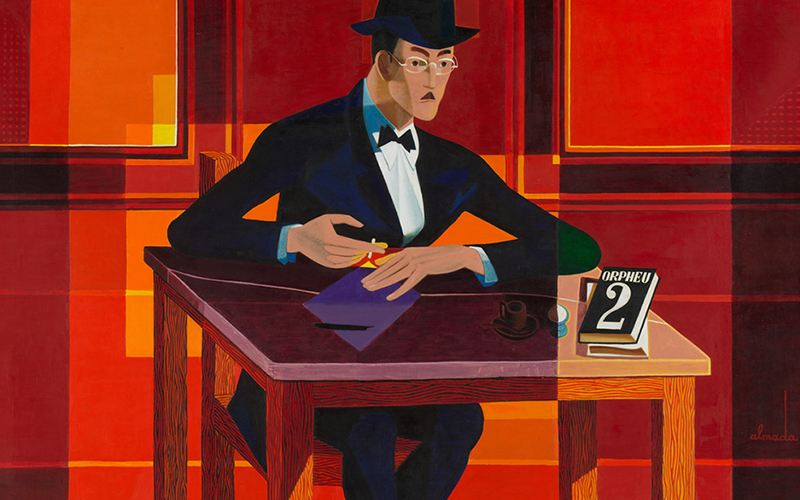
In 1954, commissioned by the ‘Irmãos Unidos’ restaurant, in Rossio, Almada Negreiros produced a large oil painting on canvas, in which he depicted Fernando Pessoa. The painting was done in the summer, on the Quinta de Bicesse, in Estoril, according to Sarah Affonso, the artist’s wife and a painter herself, in part of the garden ‘where the light, filtered through the foliage, was beautiful.’ This soft, almost sweet light fills the whole painting, reinforcing the aura of the poet, who is depicted at a desk, on which we can see, in the corner, illuminated by the sun, the two published volumes of Orpheumagazine. Pessoa’s gaze is directed at the latter, which, on the cover of the second volume, displays the number two in large print, possibly the graphic proposal of Santa-Rita Pintor, an artist who published four of his works in hors-texte, each occupying a full page, in this edition.

The ‘Irmãos Unidos’ café/restaurant had been a meeting place of the Orpheu group because Alfredo Pedro Guisado, one of its members and brother of the owner, worked there. When the space underwent renovation, the latter commissioned Almada to produce a painting referring to the moment of Orpheu to accompany a commemorative plaque which already existed there. The commission did not specify a theme and it was Almada who, after two abandoned attempts (due to the paintings’ budgets exceeding the agreed fee – 30 contos or 30,000 escudos, which today would be about 150 euros), settled on the portrait of Pessoa, the main mentor behind the magazine (together with poet Mário de Sá-Carneiro).
On its own, this painting is an important example of Portuguese art from the second half of the 20th century: due to the artist, who had experienced the venture of Orpheu at a young age and who was, in 1954, one of the only survivors of the initial group1, and due to the extraordinary representation of Pessoa, who appears as an icon, not only of Orpheu, but of Portuguese culture of the last century (of which Almada himself was already, in that same year, a leading figure).
However, not only did this canvas give rise to a second work in the space of ten years, which may be considered a rare case of the reinterpretation of a painting by its own author, but it was also the centrepiece of one of the most famous auctions of Portuguese art of the 20th century, after which some Portuguese works experienced a justifiable but unexpected increase in value.
On 14 January 1970, the entire contents of the ‘Irmãos Unidos’ restaurant, including the painting by Almada, was sold at an auction which took place in the restaurant itself. Many people attended the event, which promised to receive much attention, especially due to the painting. It did not disappoint.
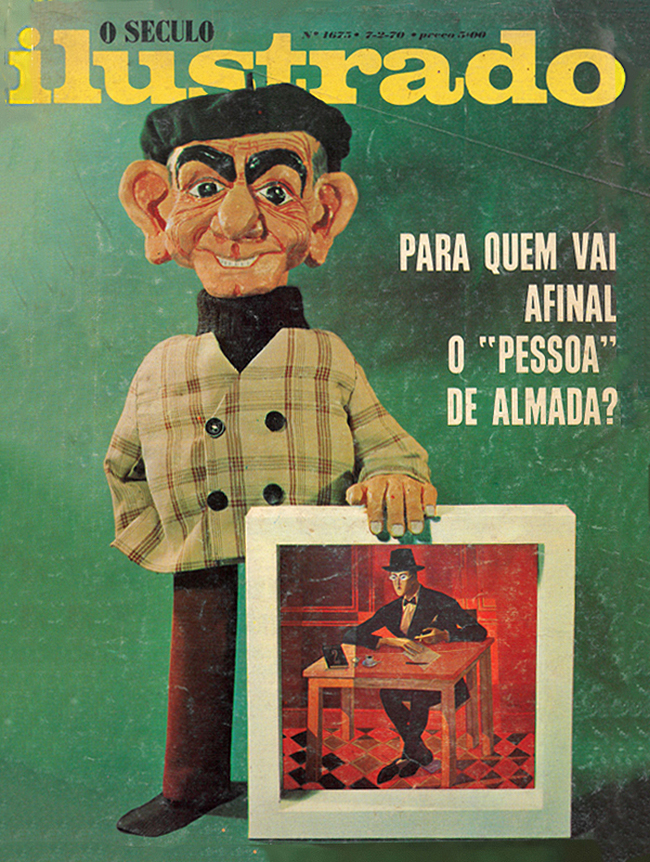
With an opening bid of 50,000 escudos, the canvas sold for 1300 contos2 in the space of a few minutes, a value without precedent in painting transactions in Portugal3. The winning bidder was Joachim Mitnitzky, who acted on behalf of his partnership with Bernardo Menezes, one of the most famous home décor and antique shops in Lisbon at the time, which was responsible, shortly afterwards, for the replacement of the paintings of the café ‘A Brasileira’, in the Chiado, in another unique deal in the history of Portuguese art.
The value fetched by the painting surprised even the buyers themselves, who had thought they would be able to acquire it for 700 contos at most, but who had the courage, in Mitnitzky’s words4, not to hesitate. Other equally interested buyers were present who withdrew from the bidding when the price exceeded expectation.
Even Almada, who watched the auction unfold from outside the venue, was surprised. The artist knew that his painting had received a considerable amount of interest. The Gulbenkian foundation had sought to purchase it years earlier but, in view of the price of 400 contos requested by the restaurant owner, preferred to commission a second painting from Almada, which the latter produced in 1964.
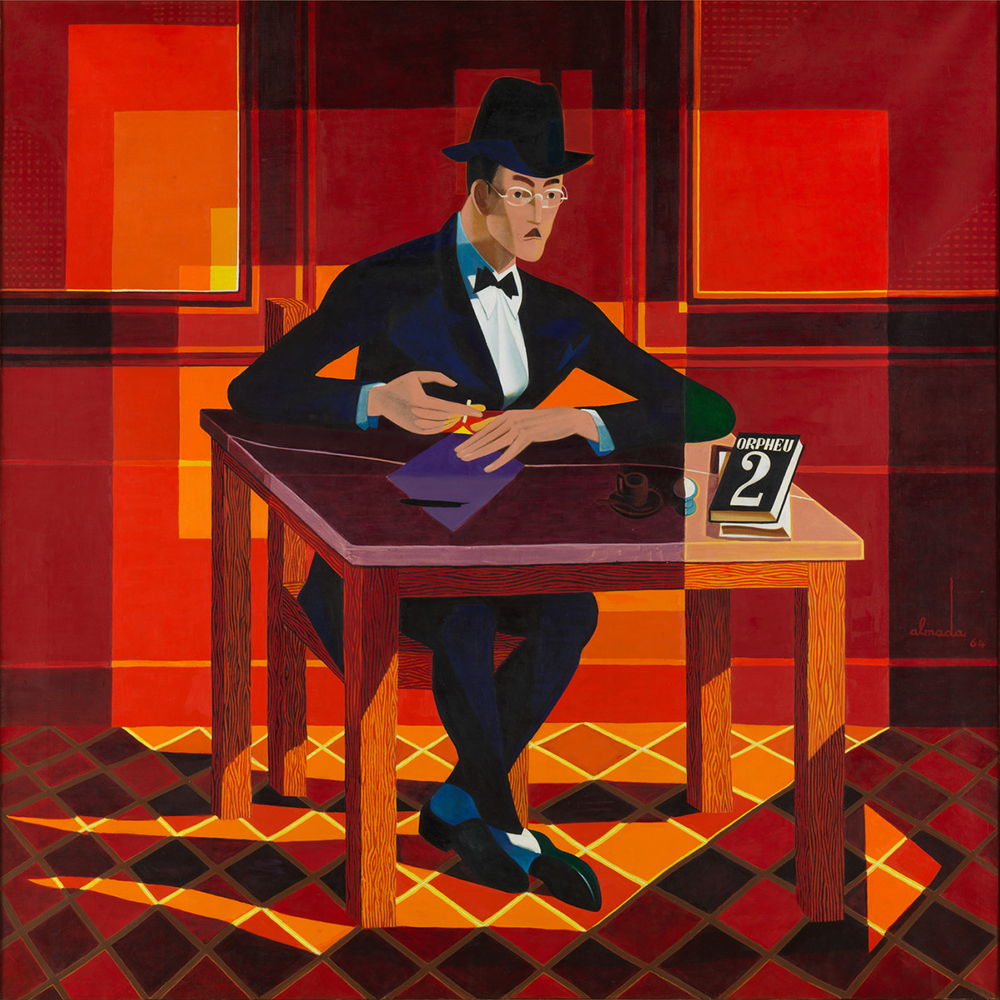
The second Retrato de Fernando Pessoa [Portrait of Fernando Pessoa] is a mirror image of the first, although with some differences both in the composition of the geometric panel behind the figure of Pessoa and in the representation of light, which appears more intense and thus required a stronger, more contrasting colour palette.
In addition to the existence of interested private buyers there was also growing concern for the conservation of a painting which many considered to belong in a museum. Its remaining in the restaurant was not advisable in a period in which people were gradually becoming aware of the value of art, noting the state of deterioration of some of the paintings which, since 1925, had decorated the café ‘A Brasileira’.
Bernardo Menezes and Joachim Mitnitzky purchased the painting in order to resell it privately, which they did in the Lisbon Antiques Salon that year. The work was bought by collector Jorge de Brito who subsequently donated it to Lisbon City Council (it currently belongs to the Museum of Lisbon and can be seen at Casa Fernando Pessoa).
The two paintings span the artistic period of Portuguese modernity, linking Fernando Pessoa to Almada Negreiros, ‘the baby of Orpheu’, and the latter, in turn, to the transit of memory with which he revisited, throughout his life, the generation to which he felt he belonged, the ‘Orpheu generation’.
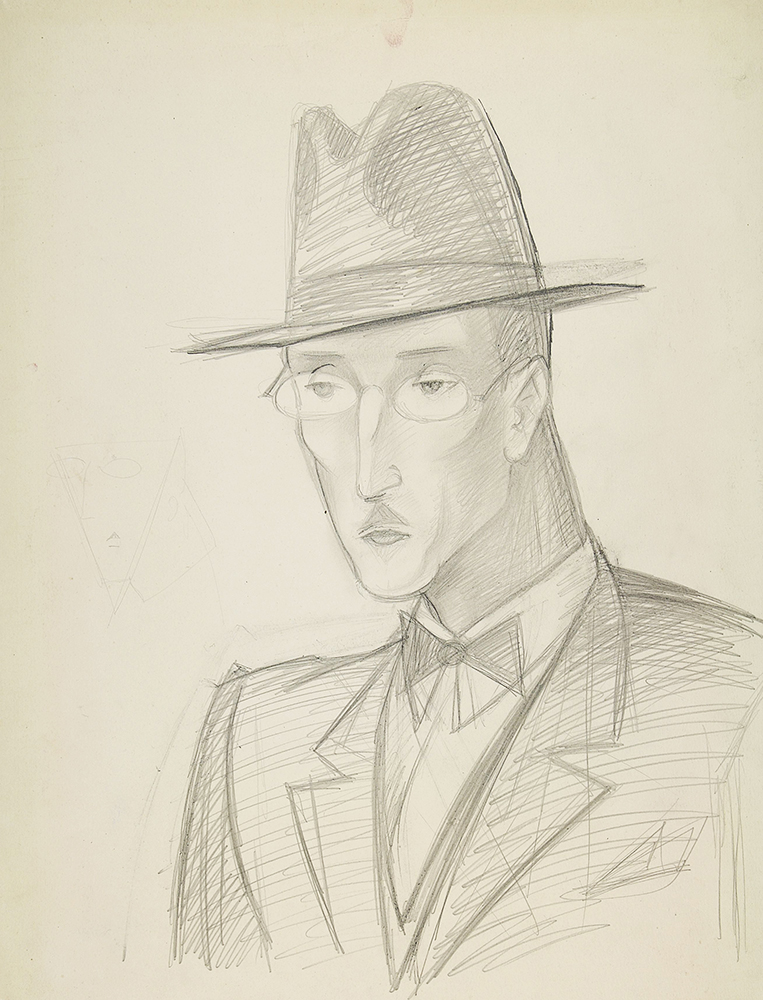
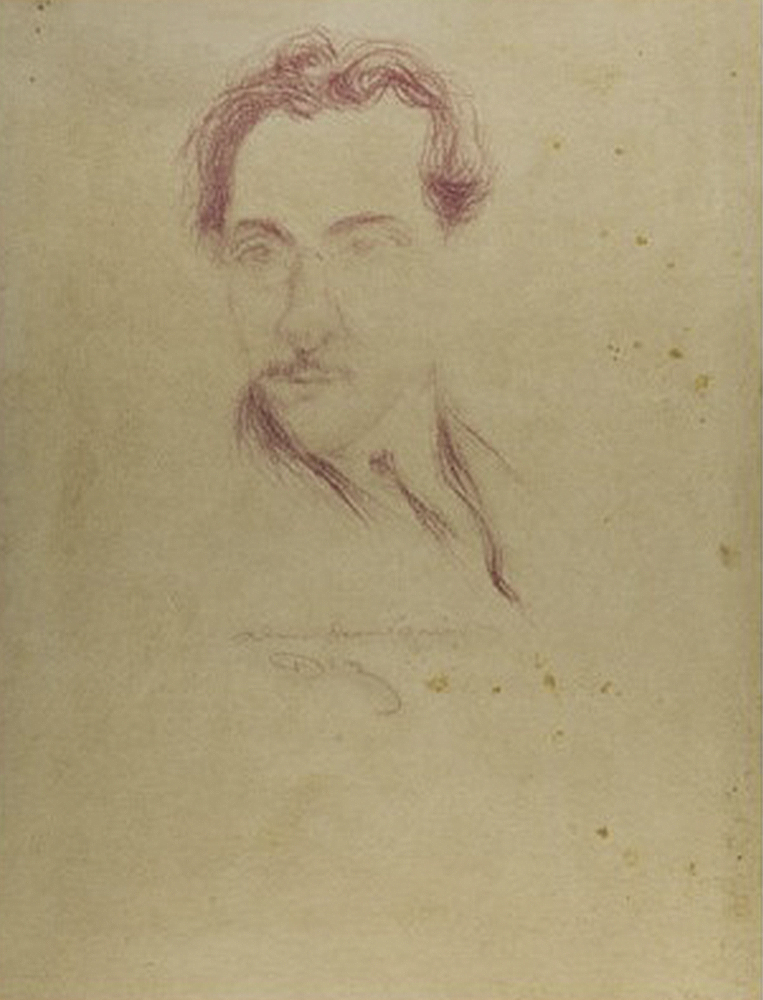
Almada is, therefore, responsible for a particular Pessoan iconography, pursuing, from very early on, the representation of the poet: from the more naturalist portrait carried out in 1913 and the synthesised effigy that appeared in the Diário de Lisboa on the occasion of Pessoa’s death, in 1935, to the sgraffiti on the façade of the Faculty of Letters, where Pessoa is portrayed with his main heteronyms, and these two great paintings which, somehow, escape time, symbolising the profound and intense relationship between poetry and painting.
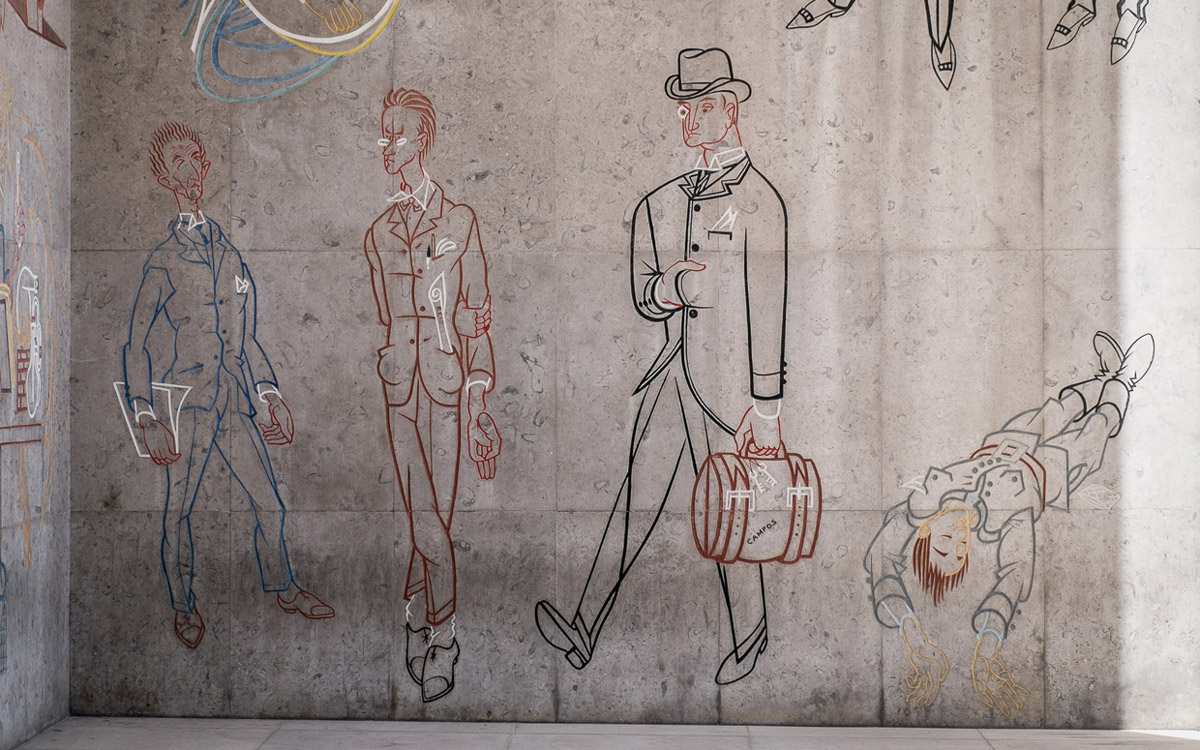
Ana Vasconcelos
Curator of the CAM
- This group consisted of Fernando Pessoa (1888-1935), Mário de Sá-Carneiro (1890-1916), Alfredo Guisado (1891-1975), Armando Côrtes-Rodrigues (1891-1971), José Pacheco (1885-1934), José de Almada Negreiros (1893-1970), Luís de Montalvor (1891-1947) and Brazilians Ronald de Carvalho (1893-1935) and Eduardo Guimaraens (1892-1928).
- Approximately 6500 euros.
- For more on this sale, see the article by Maria José Palla published in O Século Ilustrado on 7 February 1970.
- See previously cited article.
Curators’ Choices
The curators of the CAM reflect on a selection of works, which include creations by national and international artists.
More choices